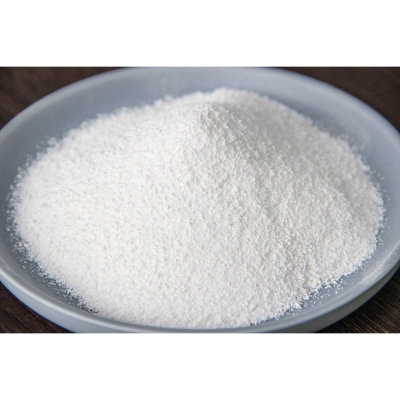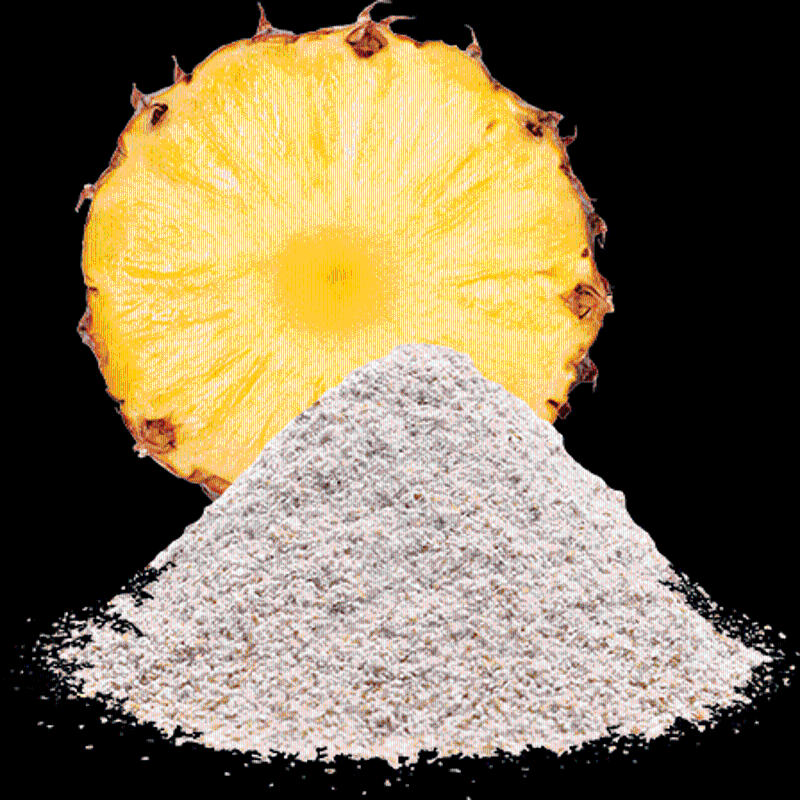Research and application of feed liquid enzyme and its post-spraying process
-
Last Update: 2020-07-02
-
Source: Internet
-
Author: User
Search more information of high quality chemicals, good prices and reliable suppliers, visit
www.echemi.com
feed safety is a major event related to food safety and consumer interests, and is a hot topic of concern to the whole societyThe core problem of realizing theof animal products "
green"is the precise use of antibiotics and other pharmaceutical additives, more application ofsuch as enzymes, microbiological agents, "
green"biotechnology products, to solve the prevention of diseases in animal husbandry production, production performance improvement and other issuesFeeding enzyme sage preparation as a new type of"
green"environmental protection additives, since the1975the United States feed industry first used enzyme preparation as an additive in the feed and achieved remarkable results, feeding enzyme preparation has been increasingly paid attention to by the world's aquaculture industryIts efficacy features are:(1)supplement ingean enzymes in animals, improve feed remuneration,(2)degrade plant cell walls to promote the digestion and absorption of nutrients,(3)eliminate anti-nutrient strain in feed, improve feed safety,(4)enhance animal resistance to disease, improve animal survival rate,(5)reduce nitrogen, phosphorus emissions, reduce(6)reduce feed costsfeed enzymes are divided into two main types according to function: one is the degradation of monosoles, amylase, protease, xylitose, cellulase, glucotose, glucotose and other monoenzymes, of which phytoenzyme and xylitose, glucosase application is the most common, more using genetic engineering liquid fermentation productionThe other is a compound enzyme reinforced by non-starch polysaccharides, fungal solid or liquid fermentation, and further compound inglyse- enzymesin order to improve the use of feed enzymes, it is necessary to study both the improvement of enzymatic properties and optimization of the method of use Enzyme properties include enzyme activity, substrate adaptability, pH curve, temperature curve, structural stability and other enzyme protein strains, mainly determined by the production of bacteria and production processes The methods used include the dosage form of the enzyme, storage stability, processing stability, the ratio of enzymes and the corresponding degradation effect of the dose and the substrate of the action feed Concorde BioGroup and other enzyme preparation manufacturers to build a modern production base, build high-efficiency engineering strains, improve fermentation engineering technology, with grain feed to vigorously promote advanced liquid enzyme after spraying process, has become a 2008 feed enzyme a bright spot The construction of genetically engineered strains people in order to solve the problem that single-stomach animals can not use phytic acid phosphorus in plants, non-starch polysaccharides and found phytoase, xylitose, cellulase and other feed enzymes Genetic engineering of this highly applied enzyme is closely focused on the central goal of industrial applications There are three possible ways to apply genetically engineered feed enzymes in aquaculture first, , through plant genetic engineering to modify the feed crops, directly in the plant's seed expression of appropriate phytoase, eliminating the production of phytoase and its addition in the feed Pen and other (1993) first successfully expressed the exogenous gene phytoase in tobacco seeds, phytoenzyme expression reached 1% of soluble protein in the seed, leave soluble protein 14.4% Li J successfully expressed phytoase from black crankin in the seeds of the (Glycine max) in 1997 , and its enzymatic properties were the same as those produced by the starting strain ; In recent years, phythase has been successfully expressed in rice, dates, corn and rape However, because plant seed is used as raw material to cooperate with feed through the whole process of feed production, so the phytoase contained in it must go through the process of high temperature granulation At the same time, because the varieties or even varieties of crops used for animal feed are often different, it is difficult to abandon the original dominant varieties on a large scale just to improve the utilization rate of phytic acid in livestock and poultry Phytic acid is one of the second messengers in plants, plays an important role in plant growth and development, is also the main mechanism of seed storage phosphorus, if the phytic enzyme is overexpressed, will cause harm to plants, the bud rate is low
3-6 Genetically modified plants can express active beta-
glucanase and glutase, and normal growth and development Non-starch polysaccharides as structural substances, if the synthesis of non-starch polysaccharides-related enzymes increases, it will also break the overall physiological balance of the plant, the appearance of reversal, reduction of second, the use of modern genetically modified animal technology, so that feed enzyme gene in the single stomach animal digestive tract endogenous expression, without external addition Serguei P was equivalent to convert ing the ECP -coded gene appA into mice 2001 55kDa active phytose protein is secreted into saliva through the salivary glands The phosphorus content in the feces of transphysegenease gene mice decreased by 11% compared to negative controls Golovan SP is equivalent to transferring the phythase gene into pigs 2001 , secreting saliva containing phytase to break down phytic phosphorus in food, and the phosphorus content in the feces it excretes is reduced by 75% compared with the control The research in this area started late, there are still many problems to be solved, the most important of which is the damage to animal bodies of the GM process, and how to avoid such problems third, microbial fermentation produces feed enzymes, pre-mixed as solid feed additives in powdered feed, or the preparation of liquid enzymes sprayed on the surface of grain feed after high temperature granulation This strategy is the easiest and easiest for users, but it places high demands on the producers of phytoase In microorganisms, phytoase is not a household gene, so the ability of natural strains to produce phytoase is very low, far from meeting the needs of feed cost control Wild-type black crankmold
NRRL3135 strain produced phytoase at the highest level of 6.8 U/ml , using modern genetic engineering technology to significantly improve the ability to produce phytoase is the most direct method the first isolated phytic asase from Aspergillus terreus No 9 A - 1 , and since then, have been isolated from more than a dozen microorganisms into phytoase, glutase, glucosase, such as bacillus, pseudomonobacteria, Lactobacillus, E coli, yeast, cyclospora, and spores the domestic researchers represented by Yao Bin, the feed institute of the Chinese Academy of Agricultural Sciences, built the above-mentioned feed enzyme E coli, Bichi yeast and other efficient expression system, and quickly industrialization The combination of the Bichi yeast expression system constructed with the liquid deep fermentation process, which uses genetically modified technology, greatly expands the source of feed enzyme genes and provides strong technical support for improving the yield and enzyme activity of feed enzymes National High-Tech Research and Development Program (863 Plan ) "
feed enzyme molecular improvement and product development " based on the urgent need of the feed industry for enzyme preparations, the organization of the Chinese Academy of Agricultural Sciences, Jilin University, East China University of Technology, Kandien, challenges and other scientific research units and enterprises, in the enzyme molecular improvement, efficient expression, engineering bacteria high-density fermentation, feed enzyme scale production and application technology, etc Enzymes and other requirements, the expected expression of xylitose, glucanase, glucolyse, semi-lactose in the engineering bacteria is higher than 5g/L , fermentation liquid price reached 10000IU/mL , 50000IU/mL , 8000 IU/mL , 5000IU/mL phytic assase has become the most promising pollution-free forage agent recognized by the world in the
21st century 21st century 1999 the global sales of phythase was 49% of all feedened enzymes In Germany and the Netherlands, more than 90% of the of pig feed has added phytoase Europe and the United States and other countries at the rate of 20% in the rate of increasing, the Asian region to 80% to 100% of the rate of the increase China is the world's leading demand for feed, 2010 and 2020 , China's feed demand is 34
0 million and 40
8 million of t , phytoase , phytoase , phytort seyoung protein demand should reach 3.4 billion to 4 08 million yuan '
s Technology Exchange Forum: Recent Hot Spots: Related Articles:
This article is an English version of an article which is originally in the Chinese language on echemi.com and is provided for information purposes only.
This website makes no representation or warranty of any kind, either expressed or implied, as to the accuracy, completeness ownership or reliability of
the article or any translations thereof. If you have any concerns or complaints relating to the article, please send an email, providing a detailed
description of the concern or complaint, to
service@echemi.com. A staff member will contact you within 5 working days. Once verified, infringing content
will be removed immediately.







